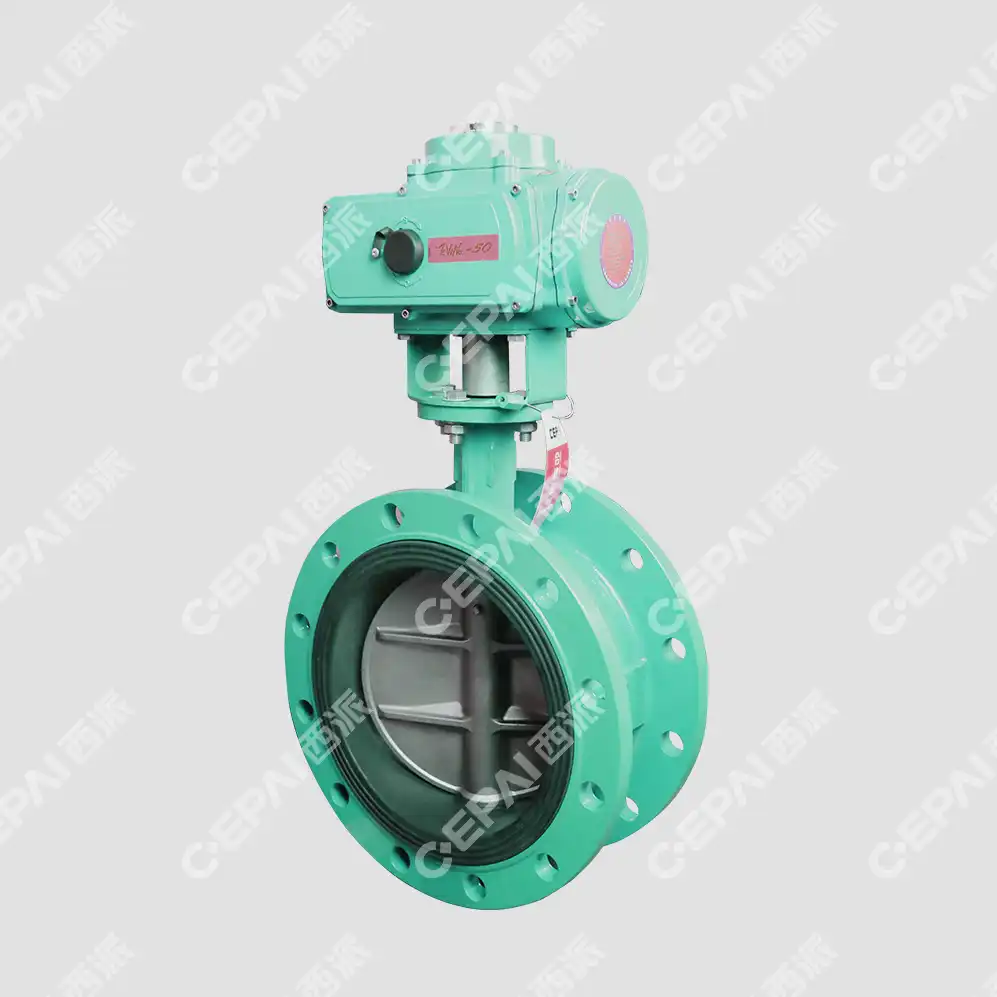Design and Construction: Unraveling the Structural Differences
Disc Positioning and Axis of Rotation
The most notable difference between concentric and eccentric butterfly valves lies in their disc positioning and axis of rotation. Concentric valves feature a disc that is centered within the valve body, rotating on a fixed axis that passes through its center. The disc rotates in a perfectly symmetrical motion with respect to the flow channel, thanks to this design. On the other hand, an eccentric valve's disc is positioned at an angle to the valve body's central line. The disc can move away from the seat while operating thanks to this eccentric location, which reduces wear and provides a more durable seal.
Seat Design and Material Considerations
The seat design in butterfly valves plays a crucial role in their sealing capabilities and overall performance. Concentric valves typically employ a resilient seat that encompasses the entire inner circumference of the valve body. This seat is often made from elastomeric materials such as EPDM, Nitrile, or PTFE, providing a flexible sealing surface. Eccentric valves, however, utilize a more complex seat design. The seat in eccentric valves is usually located on one side of the valve body, corresponding to the offset disc position. When the valve is fully closed, this arrangement makes a metal-to-metal seal, which makes it last longer and be more resistant to high temperatures and pressures.
Shaft and Bearing Configurations
The shaft and bearing configurations in concentric and eccentric butterfly valves differ significantly, impacting their operational characteristics and maintenance requirements. Concentric valves typically have a single-piece shaft that runs through the center of the disc, supported by bearings on both ends. Although this design is simple and stable, the continual contact between the disc and seat could lead to greater wear. The disc is typically mounted on stub shafts in an eccentric valve's split-shaft arrangement. By reducing the contact area between the disc and seat during operation, this configuration allows for the eccentric motion of the disc and, in turn, extends the service life of the valve by minimising wear.
Operational Characteristics: Performance Under Pressure
Sealing Mechanism and Leak-Tightness
The sealing mechanism is a critical aspect that distinguishes concentric from eccentric butterfly valves. Concentric valves rely on the compression of the resilient seat against the disc edge to create a seal. Under high-pressure situations or with frequent cycling, this design may fail to maintain a tight seal, yet it works well in low-pressure applications. A cam-action sealing mechanism is used by eccentric valves, which are characterised by their offset disc design. The disc wedges its way into the seat at an angle as the valve closes, improving the seal's integrity. Eccentric valves are able to attain exceptional leak-tightness, especially in settings with high pressure and temperature, because of this design.
Torque Requirements and Actuation
The torque requirements for operating concentric and eccentric butterfly valves differ due to their structural designs. Concentric valves generally require lower operating torques, especially when opening, as the disc moves directly away from the seat. However, they may experience higher seating torques when closing against pressure. Eccentric valves, while potentially requiring higher initial breakaway torques, benefit from reduced operating torques once the disc has moved away from the seat. This characteristic makes eccentric valves particularly suitable for applications with frequent cycling or where precise control is necessary. The choice between pneumatic, hydraulic, or electric actuators for these valve types depends on the specific application requirements and the valve's torque profile.
Flow Characteristics and Control Precision
The flow characteristics of butterfly valves are influenced by their design, impacting their suitability for various control applications. Concentric valves typically exhibit a non-linear flow characteristic, with rapid changes in flow rate occurring near the closed position. In certain cases, this behaviour can make it difficult to control the flow precisely. More linear flow characteristics are offered by eccentric valves, especially those with double or triple offset designs. Eccentric valves are ideal for applications that demand precise modulation or where preserving specified flow coefficients is of the utmost importance, thanks to the offset disc movement that provides better control over the flow rate across the whole operating range.
Application Suitability: Choosing the Right Valve for Your Needs
Pressure and Temperature Considerations
When selecting between concentric and eccentric butterfly valves, pressure and temperature ratings are paramount considerations. Concentric valves are generally suitable for low to medium pressure applications, typically up to 150 psi, and moderate temperatures. Their simple form and strong seats make them good choices for low-cost settings that don't need a lot of support. When it comes to high pressure and high temperatures, eccentric valves, especially triple offset versions, work great. Because they can seal metal to metal, eccentric valves can handle temperatures and pressures up to 1000°F (538°C) and more than 1000 psi. This makes them perfect for harsh environments in fields like oil and gas, power generation, and chemical processing.
Media Compatibility and Abrasion Resistance
The type of media being controlled plays a significant role in valve selection. Concentric butterfly valves, with their resilient seats, offer excellent compatibility with a wide range of clean fluids and gases. However, they may be less suitable for abrasive or corrosive media due to potential wear on the soft seat material. Media that are abrasive or corrosive are less likely to damage eccentric valves, especially those with metal seats and special coats. Because of how they're made, harder, more durable materials can be used in key sealing areas. This makes them last longer in harsh settings. Because of this, eccentric valves are better for situations with slurries, fast-moving fluids, or chemicals that are harsh.

Maintenance Requirements and Life Cycle Costs
The maintenance needs and overall life cycle costs of concentric and eccentric butterfly valves differ significantly. Concentric valves, with their simpler design and fewer components, generally require less frequent maintenance and are easier to repair. For less intensive uses, this can mean less startup and ongoing expenditures. However, long-term expenses may rise due to the increased frequency of seat replacement in extreme service circumstances. Although eccentric valves may have a higher initial cost, they often have lower life cycle costs when used in harsh settings. They last longer and require less maintenance because to their sturdy construction, low wear features, and resistance to extreme environments. When evaluating total cost of ownership, eccentric valves may prove more economical in high-cycle or severe service applications, despite higher initial investment.
Conclusion
Choosing between concentric and eccentric butterfly valves depends on how well you understand their differences and how the application needs to be done. When things aren't too tough, concentric valves are simple and cost-effective. But when things get tough, like when the pressure is high or the temperature is high, eccentric valves work better. Engineers and plant directors can make choices that move forward the proficiency of their liquid control frameworks, make them more solid in a wide run of mechanical settings, and lower their long-term costs by carefully considering things like weight evaluations, temperature limits, media compatibility, and long-term operational costs.
Contact Us
For expert guidance on selecting the ideal butterfly valve for your specific application, trust CEPAI Group. Our advanced valve solutions offer unparalleled performance, durability, and efficiency. Contact us today at cepai@cepai.com to discover how our innovative products can enhance your fluid control systems and drive operational excellence.


_1746598538016.webp)



